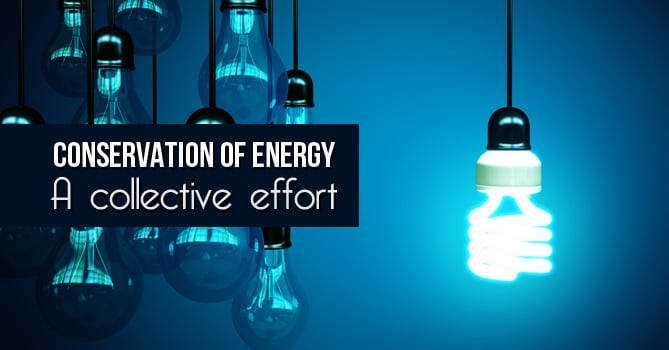The various sources of energy being used these days can be broken up into two major groups – the conventional sources of energy and the alternative sources of energy. The conventional sources of energy are the traditional ones such as the various fossil fuels like coal, oil, and natural gas, and even wood to a certain extent. The alternative sources of energy are solar energy, wind energy, geothermal energy, hydrogen energy, tidal energy, wave energy, hydroelectric energy, biomass energy, and nuclear power. The use of these fuels has developed of late with advancements in science as well as human understanding. [You may also like to know – World Energy Balance Map]
The one great problem of our energy scenario is that we are used to the energy levels produced by using fossil fuels and the various alternative sources such as solar energy do not necessarily measure up. However, thanks to wanton and indiscriminate usage of these fossil fuels they are now on the verge of extinction in the next few years and this is expected to have a major impact on the lives of people, especially in developed countries such as the U.S. The first thing that will be affected is the costs – when they are near depletion fossil fuels will not be as cheap as is expected in these areas.
Major Energy Consuming Countries of the World
United States is one of the largest users of oil with approximately 18.8 million barrels per day. China sits at the second spot with almost 8.3 million barrels per day. Japan consumes 4.4 million barrels per day approximately. With an estimated 4.1 million barrels per day, India occupies the fourth spot in the list of largest oil consumers of the world. Russia is fifth with 2.7 million barrels per day. Germany and Brazil are in the sixth spot together with approximately 2.5 million barrels per day each. Saudi Arabia sits at the eighth spot with almost 2.4 million barrels each day. At 2.2 million barrels per day South Korea occupies the ninth spot. The tenth largest consumer of oil is Canada with almost 2.1 million barrels per day.
China is the largest user of natural gas in the world with approximately 3034 million tons of oil equivalent (MTOE) a year. The US comes second with almost 2,224 MTOE and India is at the third spot with nearly 872 MTOE. Russia is at the fourth spot with almost 751 MTOE and Japan lies in the fifth position with close to 437 MTOE. Germany uses nearly 307 MTOE of natural gas and is at the sixth position followed by Brazil with 306 MTOE. South Korea is at the eighth spot with approximately 277 MTOE and Canada is at the ninth position with 251 MTOE. France is the 10th largest user of natural gas in the world with almost 243 MTOE.
China leads the global consumption of coal with almost 2.75 billion tons a year and the US is in the second spot with nearly 651 million tons. India occupies the third spot with close to 463.28 million tons a year and Japan is in the fourth spot with 183.71 million tons on an average. Russia is in the fourth spot with approximately 133.57 million tons. South Africa lies in the fifth position with almost 126 million tons and the sixth spot is taken up by South Korea with almost 117 million tons. Germany is in the seventh position with 116.14 million tons. Poland with close to 80.14 million tons is the eighth largest user of coal in the world and is followed by Indonesia is in the ninth spot with nearly 77.71 million tons.
Energy Conservation Norms around the World
ISO International Standards are a major name when it comes to energy conservation in different spaces across the world inclusive of both publicly and privately-held ones. The organization looks to reduce consumption of energy as well as the dependence various entities such as governments, corporates, and other organizations have on different fossil fuels. The main emphasis of their work is to associate and build a sustainable future. This is why they institute various norms that promote energy efficiency and greater usage of renewable energy forms. At a governmental level bodies such as European Commission play the same role with the energy efficiency directives that create rules and obligations that have to be met by members of the European Union.
How are These Norms Implemented?
As part of these norms, the various implementing bodies look at different sectors with the view to make them energy efficient. For example, they try and make both old and new buildings energy efficient and help families save energy. There are various standards that apply to the different facets of transport sector as well like ships, vehicles, and aircraft. With the help of the norms it is possible to use less fuel and reduce emissions at the same time. Renewable energy is also high on the agenda of entities dealing in energy conservation. Through the different norms and standards various organizations are encouraged to adopt the finest practices in the domain.
What are the Global Benefits of a Joint Energy Conservation Venture?
Given the precarious situation of fossil fuels around the world as well as the way they are contributing to pollution, which in turn is bringing about potentially-cataclysmic global phenomena like global warming, it is highly essential that all the countries come together and clamp down on the usage of fossil fuels. This needs to be done on an emergency basis and also to the highest extent possible. In the same vein it is also important to promote the usage of alternative sources of energy since this is what the world will have to use to a greater extent in the days ahead in any case.
In addition, when the countries are able to become energy efficient, as is the need of the hour, they will be able to save significant amounts of money that can help improve their economy. It is estimated that a country such as the US will be able to save $500 billion a year by being energy efficient. When energy efficiency projects such as repairing infrastructure and building improvements are done they can create a significant amount of jobs. For example in 2010, the US was able to create 830,000 jobs through these initiatives.
Quite often it has been seen that when a market leader delves into energy efficiency and is successful others follow him as part of the herd mentality. For example in 2012, the US saw a lighting revolution of sorts when it was said that light bulbs needed to use at least 25% less energy. An array of products such as LED streetlights, dimmable candelabra and flame-shaped CFLs swarmed the market.
Energy efficiency can reduce pollution significantly. It is expected that if the large corporates can be encouraged to be energy efficient then yearly emission of GHG (greenhouse gas) could be reduced by almost 1.1 gigatons. This means almost no vehicle on the US streets for a year. With energy efficiency countries can reduce their dependency on fossil fuels and there is more for the future generations. A country can also use the money thus saved for other important areas like primary healthcare and education and reducing poverty and hunger.

